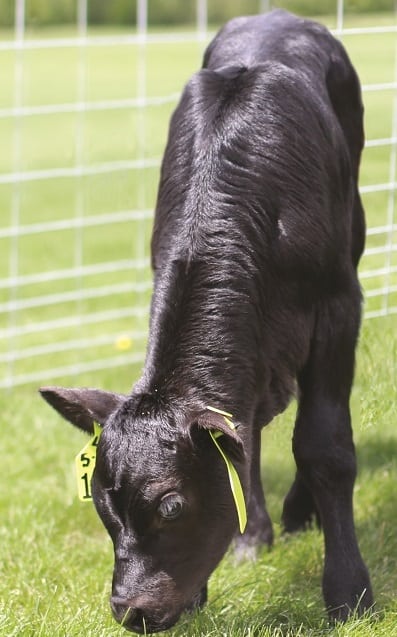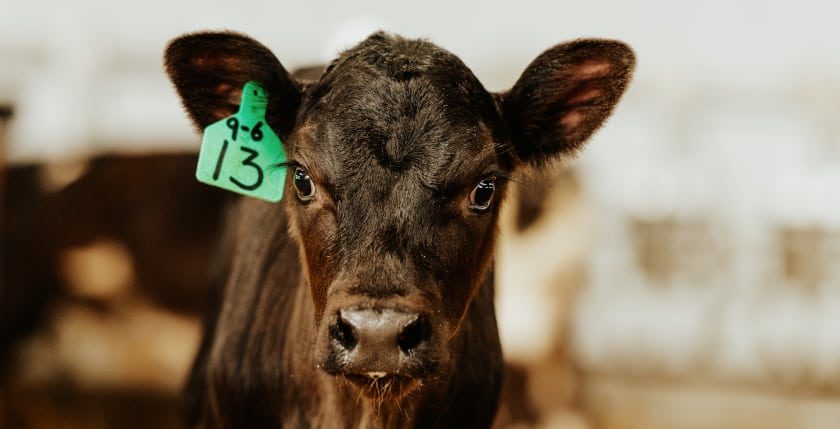You have likely heard of or already are implementing strategic breeding in your dairy herd through use of beef genetics. The elephant (or beef cross calf) in the room is:
What beef genetics should you be using?
Frankly, that’s a really good question, and I (Justin Hergenreder) am here to help you narrow down the answer. You see, I’ve been in the beef industry all my life. I grew up on a ranch in northern Colorado, earned a degree in animal science from Colorado State University and am a graduate of the Beef Leaders Institute. Today, I work for GENEX as the Director of Beef Sales, where I get to help farmers and ranchers across the U.S. identify the beef genetics that best meet their end-goals.
When determining the best beef genetics to use in creating beef on dairy cross calves, you should start by identifying the beef genetics that compliment dairy breed traits. In other words, consider what beef genetics will provide the most consistent results and ultimately maximize your profits.

The traits to focus on for maximum return
Fertility: This is first and foremost! If the semen is not fertile, then nothing else matters. Strategic breeding requires pregnancies, and open cows cost money. If you are not sure how the bulls you are using rate for fertility, ask your genetic provider for bull fertility rankings.
A blended semen product (semen from multiple bulls in one straw) can be a great way to get a fertility uptick. Blended semen consistently matches or outperforms the highest fertility bull in the blend with a 1–2 percent increase in conception rates.
Calving Ease: It’s been said that a dairy cow should have no problem having a 100+ pound calf, but why put her through that? While you do not need to use beef bulls with extreme calving ease, at least be conscious of the sire’s calving ease. Remember, for beef sires a higher calving ease value indicates greater calving ease.
Muscle: Obviously dairy cattle have not been bred for muscle, so you need to focus on this when choosing sires. Specifically, you need to look at ribeye area (REA). Do you need to use bulls in the top 10% of the breed for REA? No, but you need to put some emphasis on it.
The ultimate goal of selecting a group of sires with more REA is to get a “beef shape” to the ribeye when the animal is harvested and on the rail. One of the easiest ways to tell if a carcass is dairy or beef type is by the shape of the ribeye. A beef type ribeye is rounder, while a dairy ribeye is longer and more rectangular in shape.

Hide Color: Keeping white off of beef cross calves’ hide color will help you immensely as consistency pays, especially in regards to hide color. There are potential premiums to be earned for delivering black–hided cattle. On the other hand, do not be afraid to make good black–nosed smokes or buckskin–colored calves as well. I have watched good groups of colored calves sell just as high as black ones. The key is a hide color free of white spots!
Quality: My grandfather told me, “The most expensive thing you’ll ever buy is a cheap herd bull.” These are words to live by! While it seems simple, remember you are trying to add value to the beef on dairy calf and value–added genetics are not going to be the cheapest. If you step out and pay a little more for sires that are going to create calves that buyers seek out, then you can better maximize your return.
Breed: This is a topic that has gone around and around, and I’m sure the discussion will continue for a while. Bottomline, you should use sires that complement the breed of cow you have, and more importantly, use the breed your marketplace is seeking and paying premiums for.
From where I sit, the dairy industry has a lot of great things going for it in terms of the beef on dairy cross calf potential. Today’s progressive dairy producers have already created one of the most genetically uniform sets of cows in the world, which is a feat in itself! The next step is to pick the appropriate genetics that fit what the beef industry strives to do every day. These are genetics that create consistent cattle that are trouble-free at birth, grow fast, and do it efficiently. Achieving this will create animals that draws buyers to you; when the next person in the supply chain has a great experience with your cattle, they will be back for more, and you will like the premiums they are willing to pay.
Also, take note of other value-added programs available to you that can help drive your premiums. Look closer at the market and the premiums available for things such as source and age verified, progressive genetics, certified NHTC (Non-Hormone Treated Cattle) and certified natural, just to name a few.
I leave you with this last thought: please take beef on dairy seriously. You have the attention of the U.S. cattle industry. There is power in the decisions you make, and you have the opportunity to add a lot of value to your calves. The last thing you want to do is create a bunch of “black Holsteins” that are tall and lack muscle, because once they hit the marketplace your premiums will be short lived.
If you have any questions, feel free to reach out to me. I love to talk cattle and potential profit opportunities!


